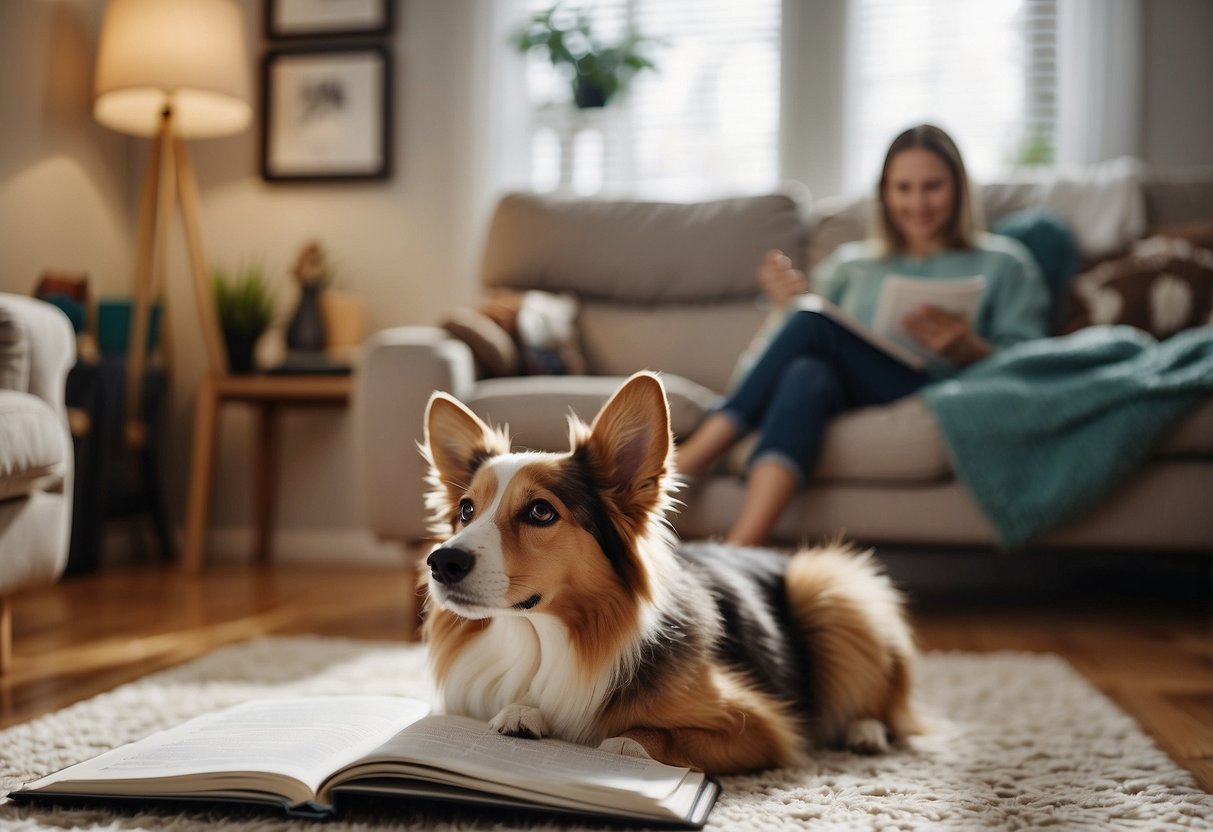
Meeting and Bonding with Potential Pets
Meeting potential pets usually occurs once the initial screening is complete. Shelters and rescues may allow multiple visits to spend time with the animals. This helps in assessing compatibility and forming a bond.
During these visits, observe the animal’s behavior, energy levels, and how they interact with you and other family members. It’s also a good time to ask staff or foster caregivers about the pet’s history, health, and temperament.
Forming a connection is vital, as it lays the foundation for a successful adoption. Patience during this phase is essential to ensure you and the pet are a good match for each other.
Introducing Your Pet to Their New Home
When adopting a pet, it’s essential to make the transition as smooth as possible. This involves creating a comforting environment and establishing a routine to help your pet feel secure.
The First Few Days: Adjustment Period
The initial days in a new home can be overwhelming for pets. To ease this transition, create a safe space where they can retreat and feel secure. This could be a dedicated room or a quiet corner with their bed, toys, and food.
It’s important to allow the pet to explore at their own pace. Keeping interactions gentle and positive helps build their confidence. Limiting their access to a small area initially can prevent them from becoming overwhelmed.
Gradually introduce them to different parts of the home and other household members. Consistency and patience are key. Avoid loud noises and too many guests during these first days to reduce stress.
Creating a Routine: Feeding, Playtime, and Sleep
Establishing a consistent routine is crucial for your pet’s well-being. Feed your pet at the same times each day, providing a balanced diet suitable for their age and breed. Fresh water should always be available.
Regular playtimes help with bonding and expend your pet’s energy. Interactive toys and activities keep them mentally stimulated. Include short training sessions to reinforce positive behaviors and establish boundaries.
Ensure your pet has a comfortable sleeping area. Regular sleep schedules contribute to their overall health. Be observant and adjust the routine to better suit their needs. Establishing a predictable routine helps with their acclimation and fosters a sense of stability.
Training and Socialization
Effective training and socialization are critical aspects of pet adoption. They ensure a smooth transition for your new pet and foster a healthy bond between you and your companion.
Basic Obedience Training and Commands
Training should start with basic obedience commands like sit, stay, come, and heel. Consistency is key to effective training. Short, frequent training sessions are more effective than longer, sporadic ones. Use positive reinforcement techniques, such as treats and praise, to encourage desirable behavior.
Obedience training not only helps in managing your pet’s behavior but also strengthens the bond between you. Enrolling in a professional obedience class can be beneficial, especially for first-time pet owners. Training can prevent unwanted behaviors like excessive barking or chewing.
Socializing with People and Other Animals
Early socialization is crucial for pets to develop well-rounded temperaments. Introduce your pet to diverse people, including children, and other animals in controlled environments. Socialization helps pets become acclimated to various situations and reduces the likelihood of fear or aggression.
Regularly exposing your pet to new experiences, such as car rides or visits to the park, helps them adjust to different settings. Positive interactions during these experiences encourage good behavior and reduce anxiety. Supervising interactions, especially in the beginning, ensures that your pet remains comfortable and safe.



